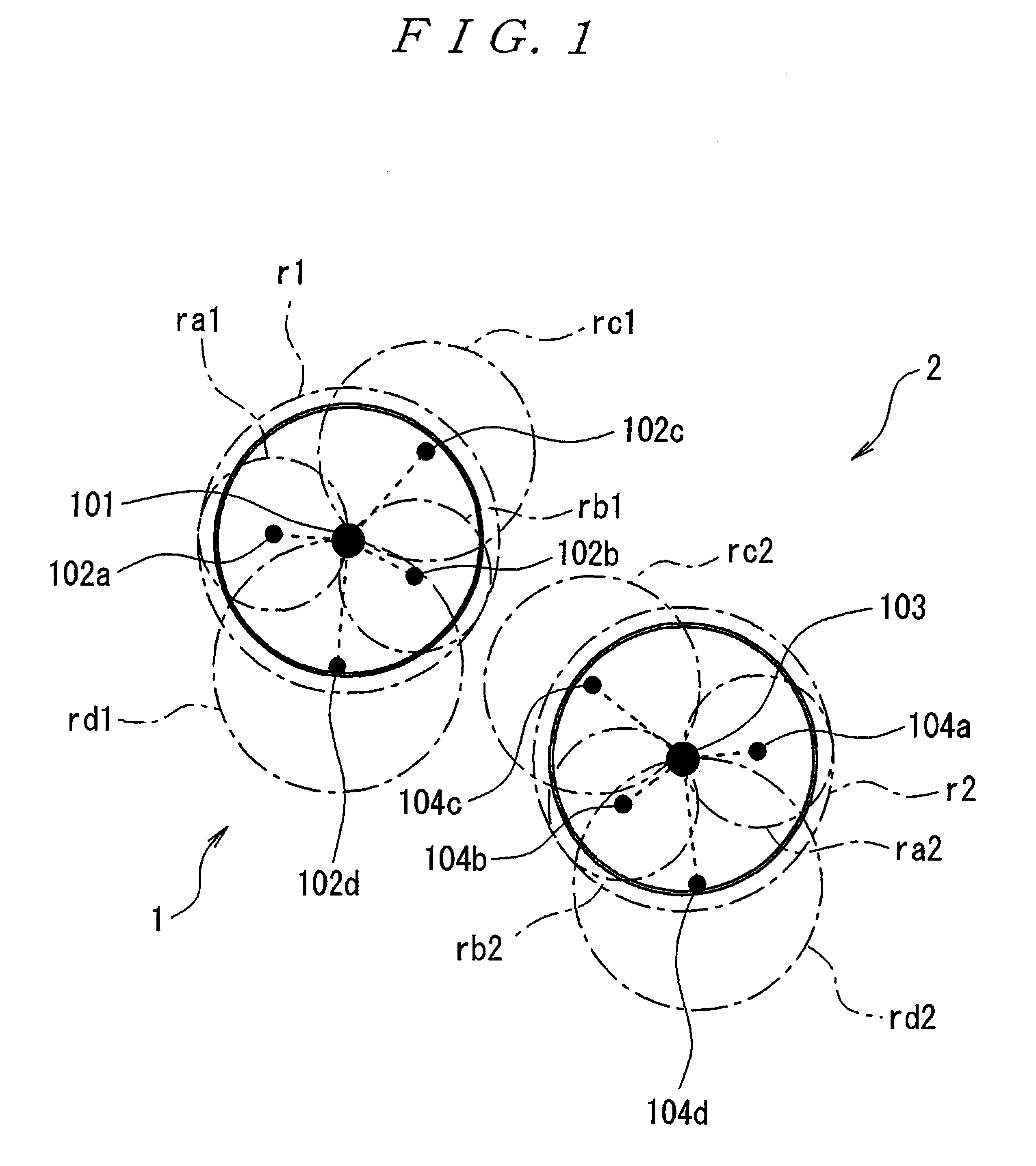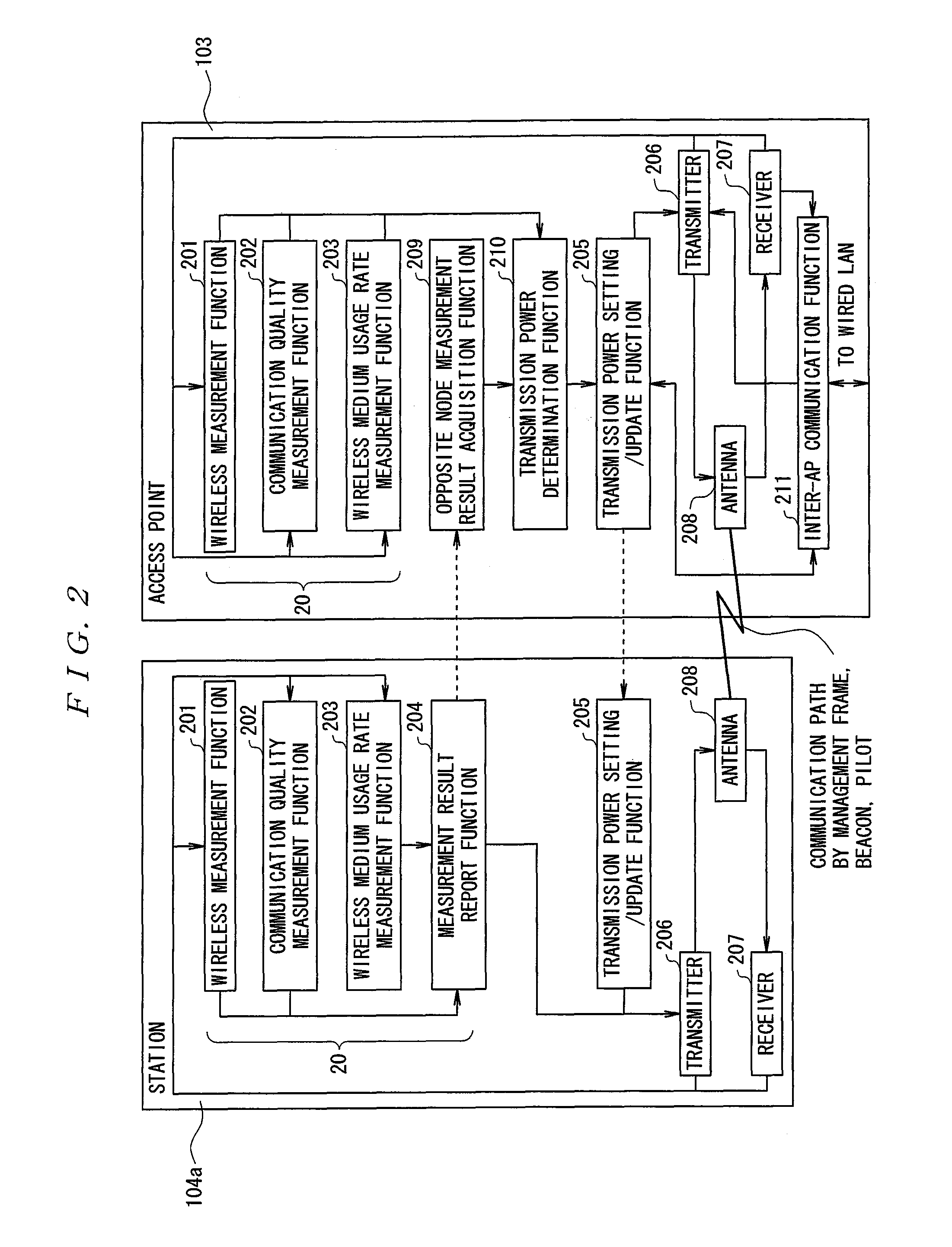Communication control device and communication control method
a communication control device and communication control technology, applied in the field of wireless lan systems, can solve the problems of packet loss, packet loss, and need for retransmission, and achieve the effect of improving communication quality and system throughput, and efficient use of wireless resources
- Summary
- Abstract
- Description
- Claims
- Application Information
AI Technical Summary
Benefits of technology
Problems solved by technology
Method used
Image
Examples
Embodiment Construction
[0082]An embodiment of the present invention will be described below.
[0083]Note that in light of the following points, the present embodiment is constituted in order to achieve node transmission power control suitable for a wireless LAN system.
[0084]That is to day, in an IEEE 802.11 standard-compliant wireless LAN system, an infrastructure mode in which a wireless network is comprised of two types of nodes: a base station (AP: access point) and a mobile terminal (STA: station), and an ad hoc mode in which the wireless network is comprised of the stations are defined. In the infrastructure mode, a set of one access point and a plurality of stations attributed to the access point is called a Basic Service Set (BSS), which corresponds to a cell of a cellular system.
[0085]In the present embodiment, an example where a communication device of the present embodiment is applied to the infrastructure mode will be described below.
[0086]In the BSS, transmission from the station to the access p...
PUM
 Login to View More
Login to View More Abstract
Description
Claims
Application Information
 Login to View More
Login to View More - R&D
- Intellectual Property
- Life Sciences
- Materials
- Tech Scout
- Unparalleled Data Quality
- Higher Quality Content
- 60% Fewer Hallucinations
Browse by: Latest US Patents, China's latest patents, Technical Efficacy Thesaurus, Application Domain, Technology Topic, Popular Technical Reports.
© 2025 PatSnap. All rights reserved.Legal|Privacy policy|Modern Slavery Act Transparency Statement|Sitemap|About US| Contact US: help@patsnap.com



